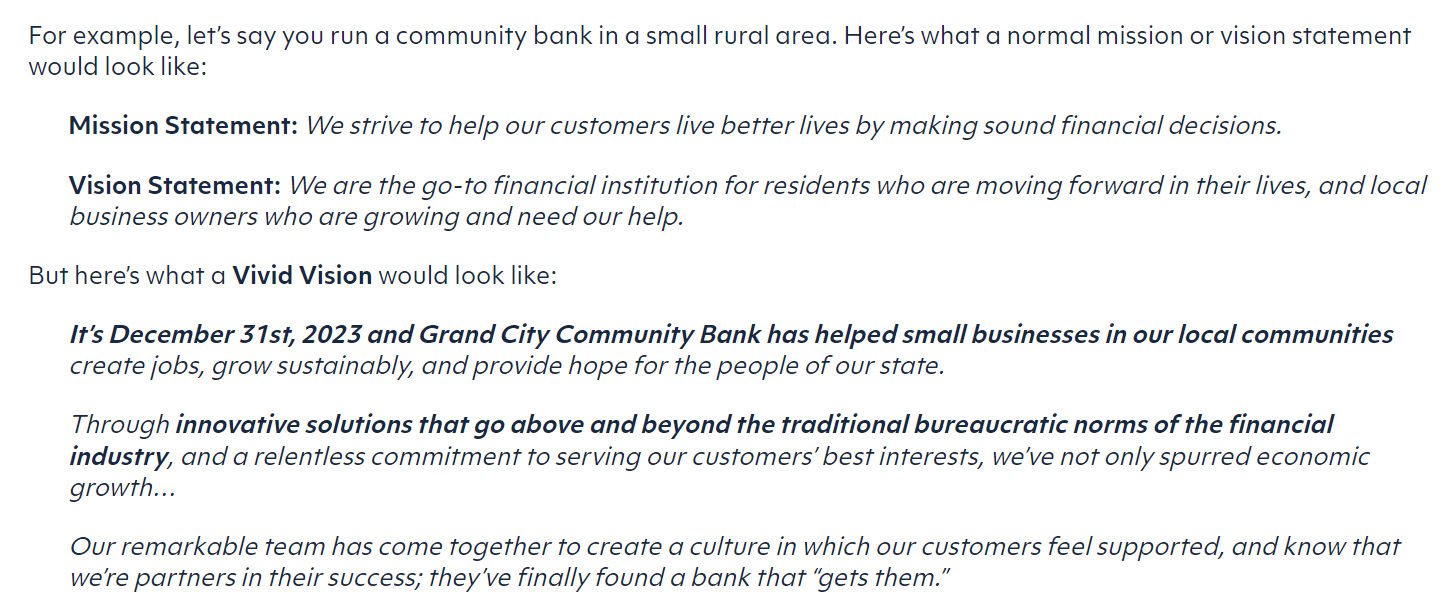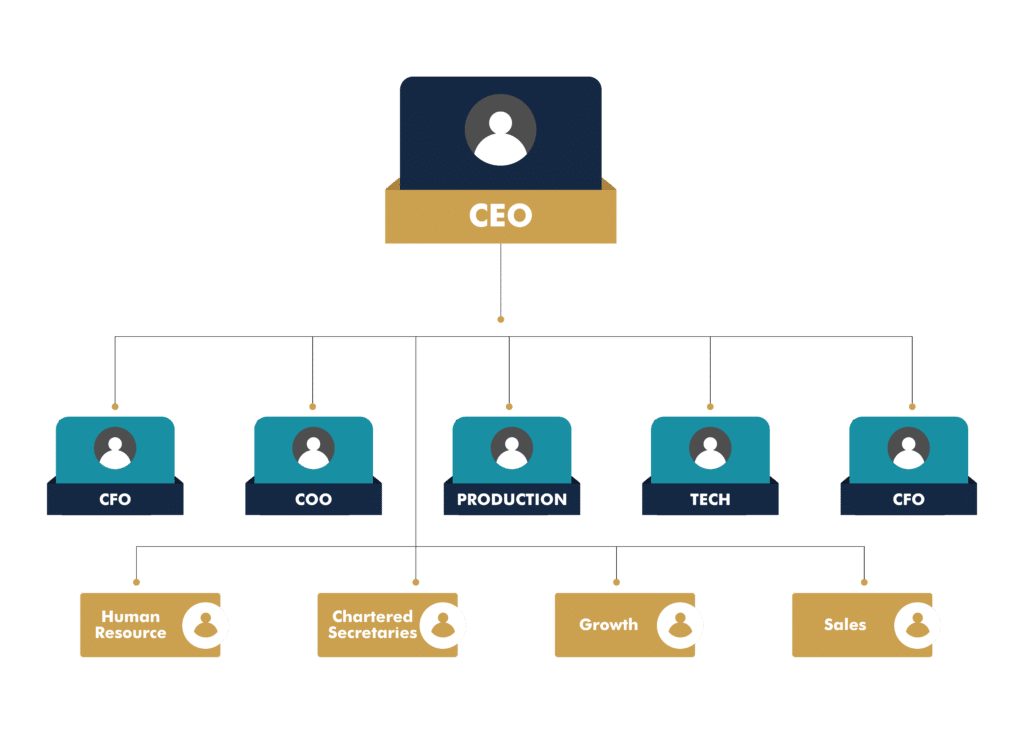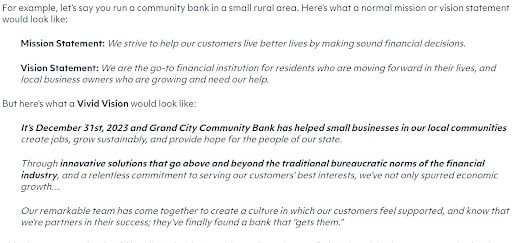Copyright © 2023 Conscious Copy & Co. All Right Reserved. | Terms & Conditions | Privacy Policy | Innovated by
“A top management team is more than a collection of the organization’s senior-most executives – it’s a microcosm for the entire organization. How the top management team works together shapes how everyone in the organization works together, especially in challenging times.” – Lara Abrash, Chair/CEO, Deloitte & Touche, LLP
It seems like basic logic that the stronger and more aligned the leadership team is, the more aligned the rest of the organization will be. But with how quickly the business landscape changes, most experts agree that technological advancements, globalization, and economic instability can cause misalignments within leadership teams.
Corporate leadership teams are often composed of C-Level executives such as the CEO, COO, CFO, CMO, CTO, etc., but “leadership” can apply to any upper-level decision maker (in smaller companies, for example, leadership might be one person: the founder or CEO).
Leadership is responsible for clarifying and communicating the company vision, proposing the strategy to get there, executing that strategy, and ultimately making better decisions based on the outcomes of that execution so the business can grow.
This all points to widespread misalignment within leadership teams on a global scale.
In this seminal Harvard Business Review piece, the authors showed that even businesses that are seeing a decline in relevance can launch new and innovative initiatives when they realign themselves internally first and provide a practical roadmap for achieving leadership alignment.
The first step: find common ground.
In the article just mentioned, the authors used Swisscom as an example. They were a multibillion-dollar company, but they’d stalled, and none of their 10 leadership team executives could agree on a way forward. But by the end of an extensive leadership training process with one of the authors:
The leadership team had converged on the “North Star” vision of Swisscom for 2025 and allocated resources for growth opportunities such as data security, the internet of things, and vertical markets, including financial tech and transportation.
In other words, they first aligned with a common vision for the company.
And it’s why almost 100% of businesses that have worked with Conscious Copy & Co. to create a Vivid Vision® said they needed help aligning their team with the company vision: one of the most important aspects of alignment within a company is having a leader who can knows how important it is to align the team with a shared vision.
And Google’s study to discover what made great managers found that those that scored higher because of their ability to communicate their vision which:
The first thought most companies have when aligning their leadership team is to create a vision or mission statement. Then they come up with an overly technical and boring run-on sentence no one remembers, that just lives on the “About Us” page of their website.
It’s not that this is the wrong approach, but most of them fall flat. Cameron Herold said it best in his book Vivid Vision:

We’ll go into a list of the most effective strategies for aligning a leadership team to an organization’s vision, but the first and most obvious is the Vivid Vision. In this post, we outline the undeniable differences between vision or mission statements and the Vivid Vision technique:

You can see other Vivid Vision examples here, ranging from manufacturing, IT, financial services, and healthcare to contracting.
Forbes asked 33 board and C-Level executives to define a “leadership team.” While all of them stated (in some form or another) that the leadership team are the DECISION MAKERS, many alluded to other responsibilities, like strengthening culture, shaping/communicating company vision, empowering employees, and developing talent.
Over the last two decades, the role of the C-Suite, or a company’s executive leadership, has changed. When companies hire CEOs (and other top-level positions), they not only look for individuals who are strategic and able to deliver financial results but someone who can:
In other words, good interpersonal skills.

For a leadership team to be aligned, they must be able to empower one another through the way they communicate.
Most people still think of the classic hierarchical structure when they think of the company’s “leadership team.” That’s because most corporations still operate this way:

How an organization structures its leadership team depends on the size and function of that business. Other structuring concepts, like EOS’s accountability chart, are great, but there’s still a group of key decision makers who make up the leadership team.
What’s most important in aligning your leadership team is its functionality: the processes used to strategize, execute, measure, pivot, and communicate. Below is a collection of the most effective structural strategies for aligning your leadership team.
“A top management team is more than a collection of the organization’s senior-most executives – it’s a microcosm for the entire organization. How the top management team works together shapes how everyone in the organization works together, especially in challenging times.” – Lara Abrash, Chair/CEO, Deloitte & Touche, LLP
It seems like basic logic that the stronger and more aligned the leadership team is, the more aligned the rest of the organization will be. But with how quickly the business landscape changes, most experts agree that technological advancements, globalization, and economic instability can cause misalignments within leadership teams.
Corporate leadership teams are often composed of C-Level executives such as the CEO, COO, CFO, CMO, CTO, etc., but “leadership” can apply to any upper-level decision maker (in smaller companies, for example, leadership might be one person: the founder or CEO).
Leadership is responsible for clarifying and communicating the company vision, proposing the strategy to get there, executing that strategy, and ultimately making better decisions based on the outcomes of that execution so the business can grow.
This all points to widespread misalignment within leadership teams on a global scale.
In this seminal Harvard Business Review piece, the authors showed that even businesses that are seeing a decline in relevance can launch new and innovative initiatives when they realign themselves internally first and provide a practical roadmap for achieving leadership alignment.
The first step: find common ground.
In the article just mentioned, the authors used Swisscom as an example. They were a multibillion-dollar company, but they’d stalled, and none of their 10 leadership team executives could agree on a way forward. But by the end of an extensive leadership training process with one of the authors:
The leadership team had converged on the “North Star” vision of Swisscom for 2025 and allocated resources for growth opportunities such as data security, the internet of things, and vertical markets, including financial tech and transportation.
In other words, they first aligned with a common vision for the company.
And it’s why almost 100% of businesses that have worked with Conscious Copy & Co. to create a Vivid Vision® said they needed help aligning their team with the company vision: one of the most important aspects of alignment within a company is having a leader who can knows how important it is to align the team with a shared vision.
And Google’s study to discover what made great managers found that those that scored higher because of their ability to communicate their vision which:
The first thought most companies have when aligning their leadership team is to create a vision or mission statement. Then they come up with an overly technical and boring run-on sentence no one remembers, that just lives on the “About Us” page of their website.
It’s not that this is the wrong approach, but most of them fall flat. Cameron Herold said it best in his book Vivid Vision:

We’ll go into a list of the most effective strategies for aligning a leadership team to an organization’s vision, but the first and most obvious is the Vivid Vision. In this post, we outline the undeniable differences between vision or mission statements and the Vivid Vision technique:

You can see other Vivid Vision examples here, ranging from manufacturing, IT, financial services, and healthcare to contracting.
Use Your Growth Strategy – Find common ground and align your leadership team with your company’s growth strategy (works with even the most prickly of leadership teams).
Forbes asked 33 board and C-Level executives to define a “leadership team.” While all of them stated (in some form or another) that the leadership team are the DECISION MAKERS, many alluded to other responsibilities, like strengthening culture, shaping/communicating company vision, empowering employees, and developing talent.
Over the last two decades, the role of the C-Suite, or a company’s executive leadership, has changed. When companies hire CEOs (and other top-level positions), they not only look for individuals who are strategic and able to deliver financial results but someone who can:
In other words, good interpersonal skills.

For a leadership team to be aligned, they must be able to empower one another through the way they communicate.
Most people still think of the classic hierarchical structure when they think of the company’s “leadership team.” That’s because most corporations still operate this way:

How an organization structures its leadership team depends on the size and function of that business. Other structuring concepts, like EOS’s accountability chart, are great, but there’s still a group of key decision makers who make up the leadership team.
What’s most important in aligning your leadership team is its functionality: the processes used to strategize, execute, measure, pivot, and communicate. Below is a collection of the most effective structural strategies for aligning your leadership team.
Copyright © 2023 Conscious Copy & Co. All Right Reserved. | Terms & Conditions | Privacy Policy | Innovated by